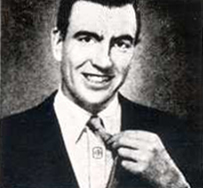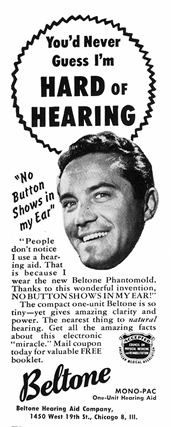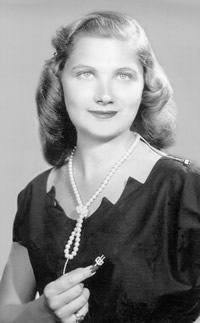
Washington University Medical Center
In the 1950s, many men and women would not dream of leaving the house without being smartly attired with several items of ornamental jewelry. In this era, hearing aid earpieces were often disguised as earrings, microphones made to resemble brooches or tie clips, and cords concealed within women's necklaces.
All is Vanity
He wears a hat with a hard tight rim,
But a hearing aid headband? Not for him!
Her earrings pinch and they're as big as dollars,
But a tiny ear piece? "No!" she hollers.
His pockets bulge with horrid litter,
He hasn't room for a small transmitter.
She squints and scowls with the strain she brooks,
But she's sure that an aid would "spoil her looks."
Vanity, vanity, all is vanity.
And vain is aid for vain humanity.
-Gene Ellinger, 1949
 © Courtesy of Sonotone
© Courtesy of Sonotone
 © Courtesy of Beltone Electronics Corporation.
© Courtesy of Beltone Electronics Corporation.
 © Hal-Hen Company, Inc.
© Hal-Hen Company, Inc.
Hal-Hen Pearl Hearing Aid Cord Necklace
The Hal-Hen pearl hearing aid necklace as modeled by the creator's
wife, was designed to camouflage the hearing aid cord.